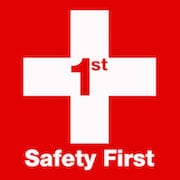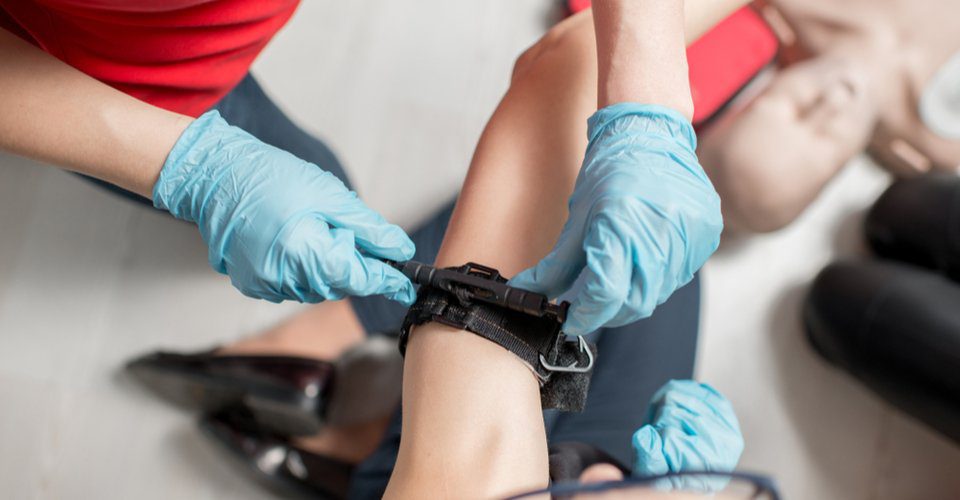May is Stop the Bleed Month! This awareness campaign is dedicated to encouraging the public to get first aid training so they can feel empowered to help during a bleeding emergency.
Get trained
Blood loss can quickly become life-threatening. A person experiencing severe bleeding can die within only a few minutes.
According to the STOP THE BLEED campaign, the average bleed out time is 2-5 minutes. While the average EMS response time is 7-10 minutes (response times vary widely across the country).
Because of this gap, nearby bystanders remain the key to survival during a bleeding emergency.
How to respond to a bleeding emergency
Severe bleeding is a life-threatening emergency. Normally, a damaged blood vessel will constrict and stop bleeding once the body has produced a clot to plug the damaged area. But heavy bleeding interferes with this natural defense.
The best method to control severe bleeding is to apply firm pressure directly on the wound. This will help with the clotting process.
If a person is bleeding heavily:
- Apply pressure. Wear gloves and other personal protective equipment (PPE). Expose the wound and apply firm, direct pressure with a sterile gauze or the cleanest cloth available.
- Add dressings as needed. Continue to add dressings as they become soaked with blood. Don’t remove the soaked dressings because it will remove the newly formed clot.
- Apply a tourniquet. If the bleeding can’t be controlled with direct pressure, place a tourniquet at least 2 inches above the injury – but not over a joint. Record what time the tourniquet was applied and communicate that time with EMS responders.
Always call 911 if the bleeding is severe or won’t stop. And monitor the person for signs of shock.
Get trained
We encourage everyone to get trained, so you can feel confident and prepared to assist during a bleeding emergency. Contact us at [email protected] to register for a Basic First Aid course.
This article is by the American Safety and Health Institute and originally appeared here.

